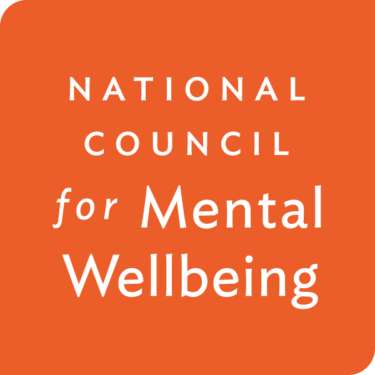On Wednesday, President Trump signed into law a sweeping bipartisan opioid package (H.R. 6) passed by the House and Senate earlier this year. The SUPPORT for Patients and Communities Act (SUPPORT Act) promotes many National Council priorities, including expanding access to treatment, strengthening the behavioral health workforce and supporting behavioral health information technology. While the SUPPORT for Patients and Communities Act is an important step toward curbing the opioid epidemic, a more comprehensive response that invests in the full continuum of addiction services is needed to address the nation’s addiction crisis.
REACTION
While the National Council for Mental Wellbeing (National Council) is pleased to see many important policy changes included in the final opioid package, it ultimately falls short on providing desperately needed long-term investments in prevention, treatment and recovery services. In particular, the National Council is disappointed that Congress missed this opportunity to expand the current eight-state, two-year Certified Community Behavioral Health Clinic (CCBHC) program via the Excellence in Mental Health and Addiction Treatment Expansion Act. This program has shown tremendous results in expanding access to comprehensive addiction services in a sustainable way.
WHAT’S IN?
Throughout Congress’ efforts to address the opioid crisis, the National Council and its member organizations have been advocating for a number of important measures, many of which have been included in the new law.
The National Council was pleased to see the following measures in the package:
- The Special Registration for Telemedicine Clarification Act will remove barriers to accessing medication-assisted treatment (MAT) for opioid use disorders via telemedicine in rural and frontier areas and is a direct result of National Council advocacy efforts.
- The Substance Use Disorder Workforce Loan Repayment Act will create incentives for students to pursue addiction treatment careers, increasing timely access to treatment for individuals living with addiction. This legislation was introduced as a result of education and advocacy by the National Council and the Association for Behavioral Healthcare in Massachusetts.
- Improving Access to Behavioral Health Information Technology Act incentivizes behavioral health providers to adopt electronic health records (EHRs). The National Council has been working for passage of this legislation since 2009, when behavioral health was left out of a law that created financial incentives for providers and hospitals to implement EHR systems to improve patient care.
- Ensuring Access to Quality Sober Living Act requires the Substance Abuse and Mental Health Services Administration to disseminate best practices for operating recovery housing to states and help them adopt those standards. The National Council has been a longtime supporter of imposing more robust standards. To this end, in partnership with the National Alliance for Recovery Residences, we recently issued Building Recovery: State Policy Guide for Supporting Recovery Housing to assist states with the creation of recovery housing certification programs that standardize recovery housing operations to protect and support residents.
- Improving Access to Mental Health Services Act will allow behavioral health National Health Service Corps participants to work in schools and other community-based settings, thereby lowering barriers to access, particularly for rural and frontier communities.
- MAT Prescribing Expansions: The packages pulls a provisions from the Addiction Treatment Access Improvement Act to expand access to medication-assisted treatment (MAT), which is considered the gold standard of opioid use disorder treatment. These measures will: 1) eliminate the sunset date for nurse practitioners’ (NPs) and physician assistants’ (PAs) prescribing authority for buprenorphine (a MAT medication), 2) temporarily expand the definition of “qualifying practitioner” to prescribe buprenorphine to include nurse anesthetists, clinical nurse specialists, and nurse midwives, 3) permit a DATA-2000 waivered-practitioner to start immediately treating 100 patients at a time with buprenorphine (in lieu of the initial 30 patient cap) if the practitioner meets certain requirements, and 4) codify a change that expanded the number of patients that a physician can treat with buprenorphine at any one time to 275 patients, up from 100 patients. A separate provision would also ensure physicians who have recently graduated in good standing from an accredited school of allopathic or osteopathic medicine, and who meet the other training requirements to prescribe MAT, can obtain a waiver to prescribe MAT.
- Medicare SUD Treatment Access: The bill creates a demonstration project that would allow Medicare beneficiaries to receive MAT and certain wraparound services at an Opioid Treatment Program (OTP), also known as a methadone clinic. Currently, OTPs are not recognized as Medicare providers, meaning that Medicare beneficiaries receiving MAT at OTPs must pay out-of-pocket.
- IMD Rule Changes: The National Council was pleased to see a provision to temporarily repeal the Institutions for Mental Disease (IMD) exclusion, a policy that prohibits Medicaid payment for residential SUD and mental health care in facilities with more than 16 beds, broadened to cover residential treatment of all substance use disorders, rather than just opioid use disorders. The repeal would last for five years, and cover patient stays of up to 30 days within the previous 12 months. The provision also contains strict maintenance-of-effort requirements. Again, the National Council is disappointed to see little investment in community-based services that ensure patients can maintain a successful recovery after exiting inpatient treatment.
A controversial measure to loosen 42 CFR Part 2, the regulation governing the privacy of SUD treatment records, was not included in the final bill.
The final compromise opioid package contains over 70 opioid-related bills. For a more comprehensive summary of the package’s provisions, please see the section-by-section summary here.

